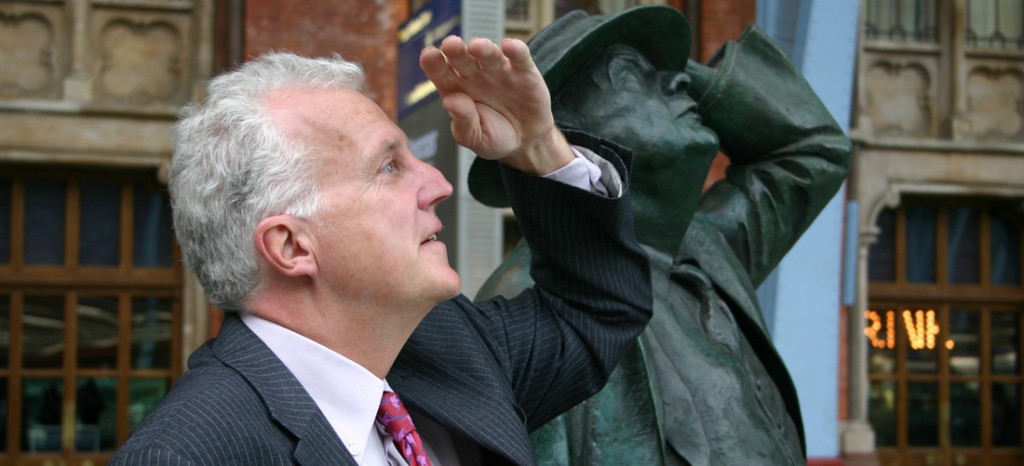It’s easy to dismiss foreign experience as irrelevant because each country and culture has its particular institutions and history. However, fundamentally the issues around transport are the same across the world and a recent study visit to Gothenburg in Sweden, a town of just over half a million inhabitants, threw up a number of issues from which we can learn.
Of course, I realised that Gothenburg was very different from any British city as soon as I stepped out my hotel for my morning jog. The main town square bounded by the central station and several hotels which had been quiet the previous evening– northern European towns do lack night life – had turned into a buzz of buses and trams. Indeed, there was a series of lines bounding the square and two, rather perilously for pedestrians, actually crossing it in a diagonal square.
Gothenburg was one of only two Swedish cities not to follow the postwar trend of closing down the tram lines – which was exacerbated by the 1967 switch from left hand to right hand driving and has used that to build up a comprehensive network of dozen lines used carrying more than 100m passengers – in other words 200 journeys per inhabitant annually – daily.
The key point, though, is that Gothenburg is still dissatisfied with the modal split, with around 60 per cent of journeys by car. The difference in the political situation between the UK and Sweden was brought home to me by the first thing that Anders Roth, the City’s Environmental Manager, said in his introduction: ‘Our aim is to reduce the number of car journeys’. Moreover, that is a strategy accepted across the political spectrum.
The city is in the midst of a radical set of changes, ranging from pedestrianising most of the streets in the central area, allowing in delivery lorries only for a limited period in the morning, to the creation of a large underground rail tunnel to allow trains to run through the main station which is currently only a terminus, limiting its capacity.
That is an expensive project, part of a £3.4bn scheme that also includes greatly improving public transport which has been voted through by the city council. The crucial catalyst, though, to obtain half the funding from the federal government was the agreement that there would be a congestion charge not just for the city centre but to include the main roads that circumvent the city. Thus Gothenburg, in early January, will follow the example of Singapore, London and Stockholm, the only cities in the world so far to have adopted congestion charge schemes (Oslo is rather different).
There are to be 60 kms of new bus lanes in the next 18 months and there are discussions about whether some of them might be allowed to take lorries, too at certain times. In one area, Lindholmen, a drop off point has been created so that deliveries can be co-ordinated, reducing the number of vans driving in an area with narrow streets.
Probably the nearest city in size and shape in Britain to Gothenburg is Bristol, with the similarity made stronger given both have a rich maritime history. However, the contrast could not be greater. Rather than trams being sprayed round the central square like confetti at a wedding, Bristol has rejected several schemes for a tram line and has struggled to get a bus rapid transit scheme introduced in the teeth of fierce opposition.
Gothenburg has been helped by the fact that the city council is a powerful body, covering a wide area and controlling the local transport while in Britain the fragmented state of government – the tram scheme was to be built jointly with South Gloucestershire – deters initiative. There are, too, plans in Bristol to create a ‘Living Heart’ by reducing traffic in the city centre, an area similar in size to Gothenburg’s old town where all the minor roads have recently been pedestrianised.
Bristol has a plan to improve its railways but that is very dependent on the results of the franchising process and decisions by central government and Network Rail over investment. Bristol City Council can lobby and put in a bit of money, but does not have the same clout as local government in Gothenburg. Perhaps the election of a mayor – Bristol was the one town to give the idea the go-ahead – may make a key difference. Several mayoral candidates have committed themselves to supporting the ‘Living Heart’ idea.
However, the experience of Gothenburg should not be viewed as something happening ‘over there’. We should take from it the fact that change can come about – even miracles can happen since, while I was there, Sweden went from 4-0 down in their match with Germany to 4-4 in the last half hour – but it takes time and effort. As Gothenburg’s Mr Roth said, ‘there’s a combination of small and big things that have resulted in change’.
